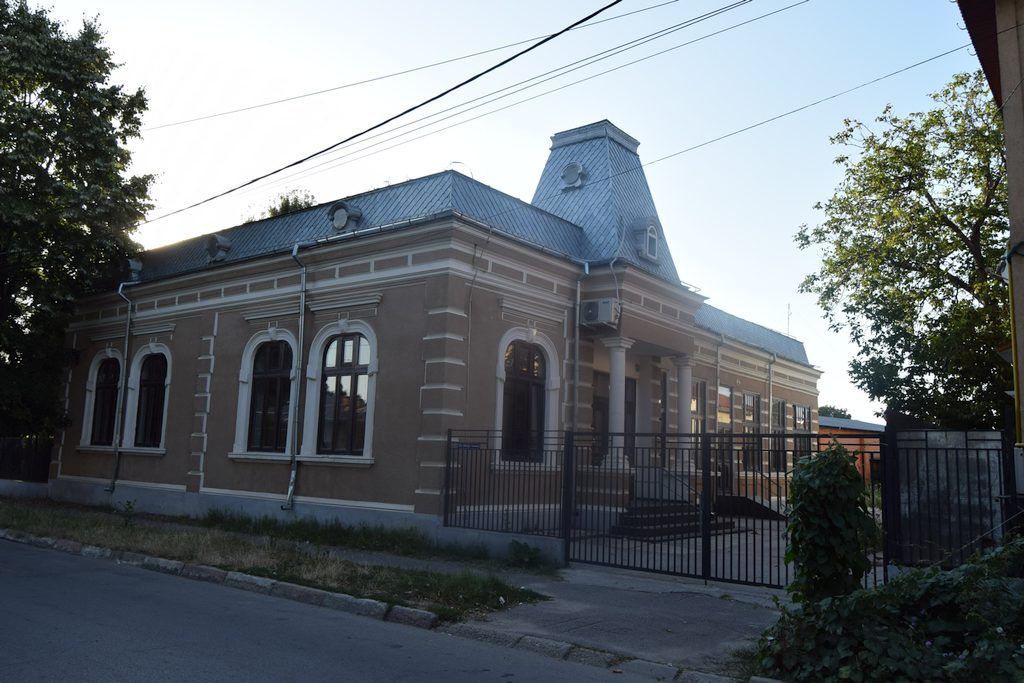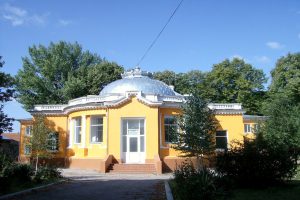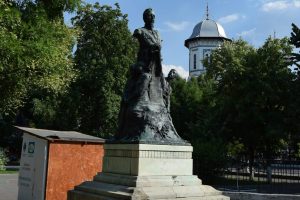

The Daia House in Roșiori was built in 1902 in the specific architecture of the era, the era of economic trade fairs in full swing.
Rosiorii de Vede city sits over the foundations of a Roman fort which was part of Limes Transalutanus (sec. III AD). The first documentary attestation of the municipality dates from the second century C.E., when onto one of Ptolemy’s map appears under the name of Pirus – City of Pears. Later, along with the passage of migratory peoples, the Bulgarians, of which a part have settled here, adapted the Latin name to Slavic idiom, using the word “GRUSI’ – Pere. Gradually, this name is adopted by the local population who, for an easier pronunciation in Romanian language removes the ‘G’ remaining, initially, the name of RUSI. Later, along with the migration of peoples of German origin towards Central Europe, a small part remaining still to live in this city, RUSI word became Russen, plural in German language.
In 1385, at the second clear documentary attestation of the current city, appears the name RUSSENART (which was the old town), by adding the suffix ART, from the ancient fortress Artina (named also Arcinna) on Limes Transalutanus, taken and strengthened by the Romans to defend the city that had developed as a continuation of this one, between gently-sloping hills of the river Vedea (purple water).
The current city Roșiorii de Vede (the correct name should be MUNICIPALITY RUSSENART) is therefore one of the oldest cities fortresses in Romania’s territory, further research (in Albeşti, Peret and Dulceanca) proving that it actually dates back to sec . IV BC.
The first mention in an internal source, is the charter given by Neagoe Basarab to Cutlumuz monastery from Athos (1512-1513). Are mentioned the Serbs and Russians settlements. The first record of the full name as “Rușii de Vede” is in the the document issued by Radu of Afumaţi on May 18th, 1526. In the century XVI becomes captain for the riders division. In 1689 is hosted at the Rușii de Vede, Prince Constantin Brancoveanu being in conflict with imperial general Heissller.
Teleorman County benefit from sec. XVIII of a Ruși city and two trade fairs: Zimnicea and Mavrodin. All three were on dedicated or boyars estates. So there was no free urban center.
In 1821 the city Rușii de Vede was transformed by Tudor Vladimirescu in a monitor point of the movement of Turks on the Danube. It is permanently occupied and burned by the Turks.
By the peace treaty of Adrianople in 1829 was removed the Turkish monopoly on trade and were amplified the links on the Danube. In 1831, Rușii de Vede was the only city in the county. Here were practiced 20 Handicrafts in which worked 193 persons. In the city were operating 42 Bacar, 17 furriers, 17 shoemaker, 15 coppersmiths, 14 dyers, etc.



